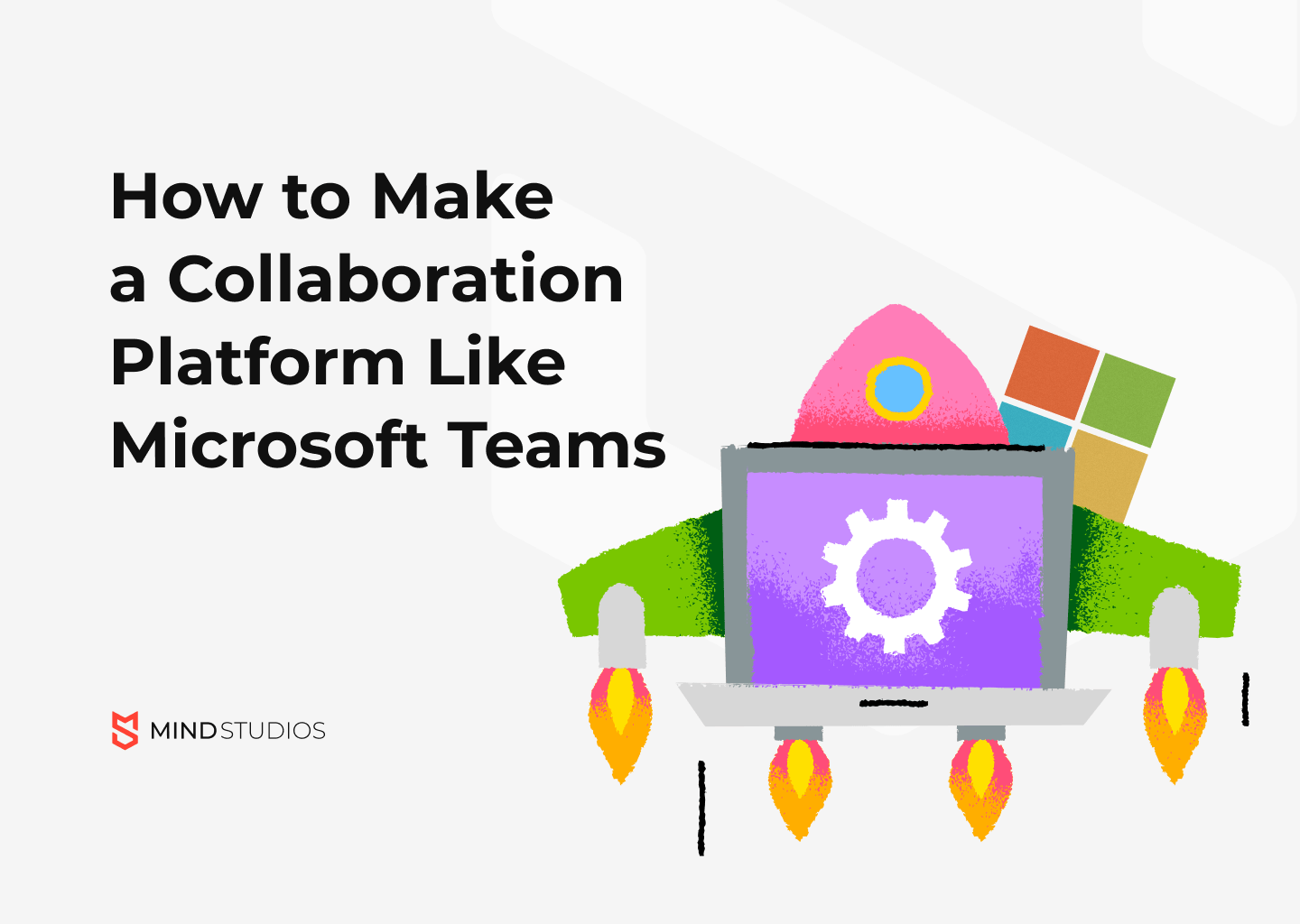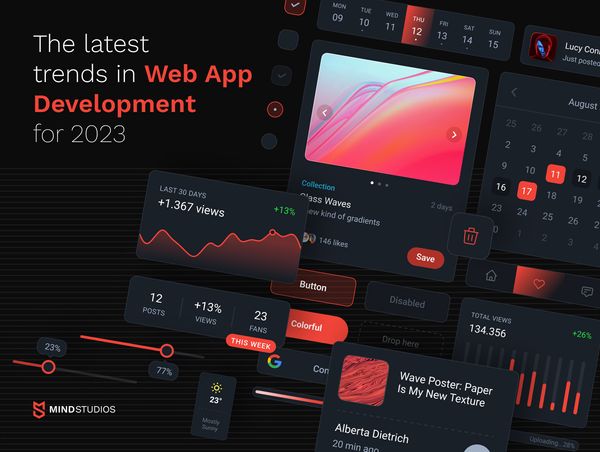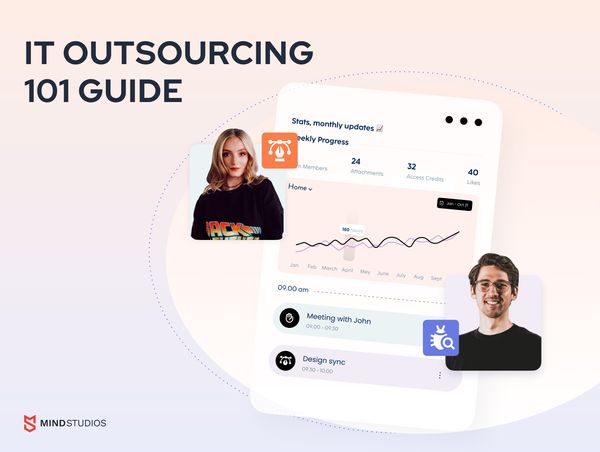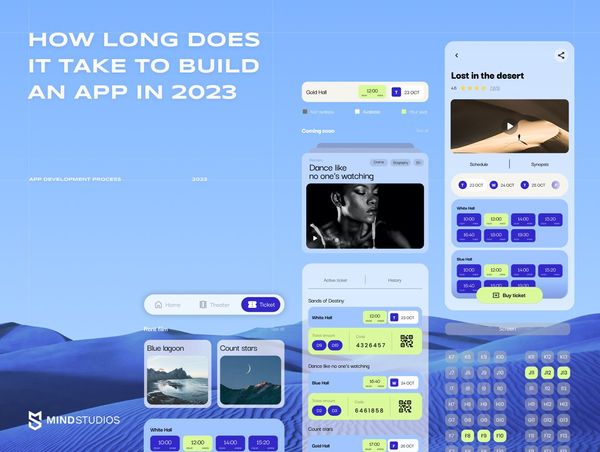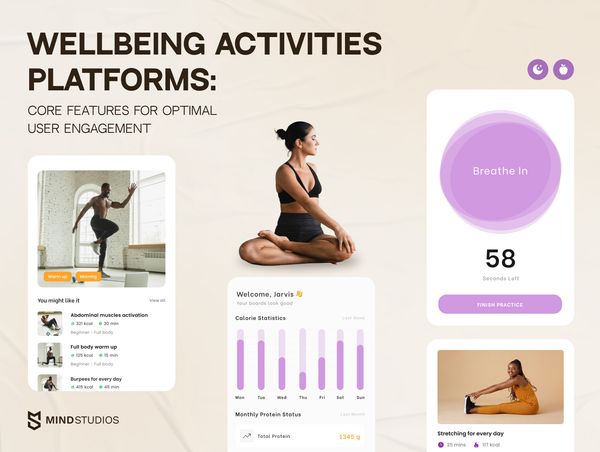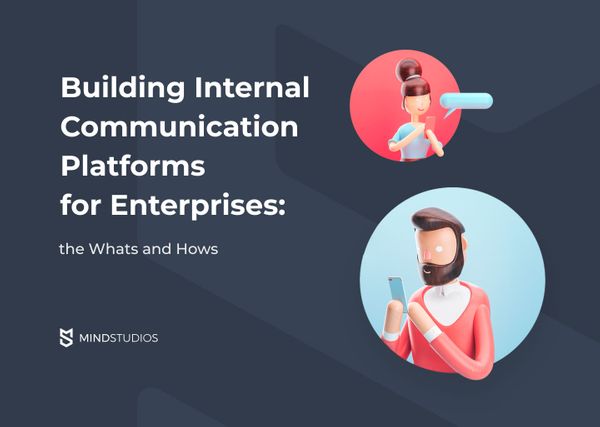
In this article, we talk about how to build an enterprise connectivity platform. What is a connectivity platform and how should you go about building one? Read on to get insights on this topic and scroll down for an estimate of the cost to develop an internal communications website.
Contents:
- What is internal communication software?
- How to make internal communication software
- Features for an internal communication mobile app or website
- Cost to make an enterprise connectivity platform
What is internal communication software?
Big or small, every company needs a system for internal communication. Effective internal communication at all levels is integral to improving performance and enhancing results. Internal communication software can:
- make employees more engaged in the company’s success
- coordinate tasks between employees and departments
- efficiently monitor and moderate employees who work remotely
- provide employees with a fast-acting support network
Depending on the type of company, its size, and the niche it operates in, the requirements for a communication system will differ. However, communication is key to productivity in any company.
When it comes to internal communication, most small and medium-sized companies use two types of technology: email for company-wide announcements and instant messaging apps and chatrooms for more urgent issues.
But there’s more to corporate communication software than just email and messengers, and some types of communication software offer functionality neither email nor instant messaging apps can.
1. Intranet
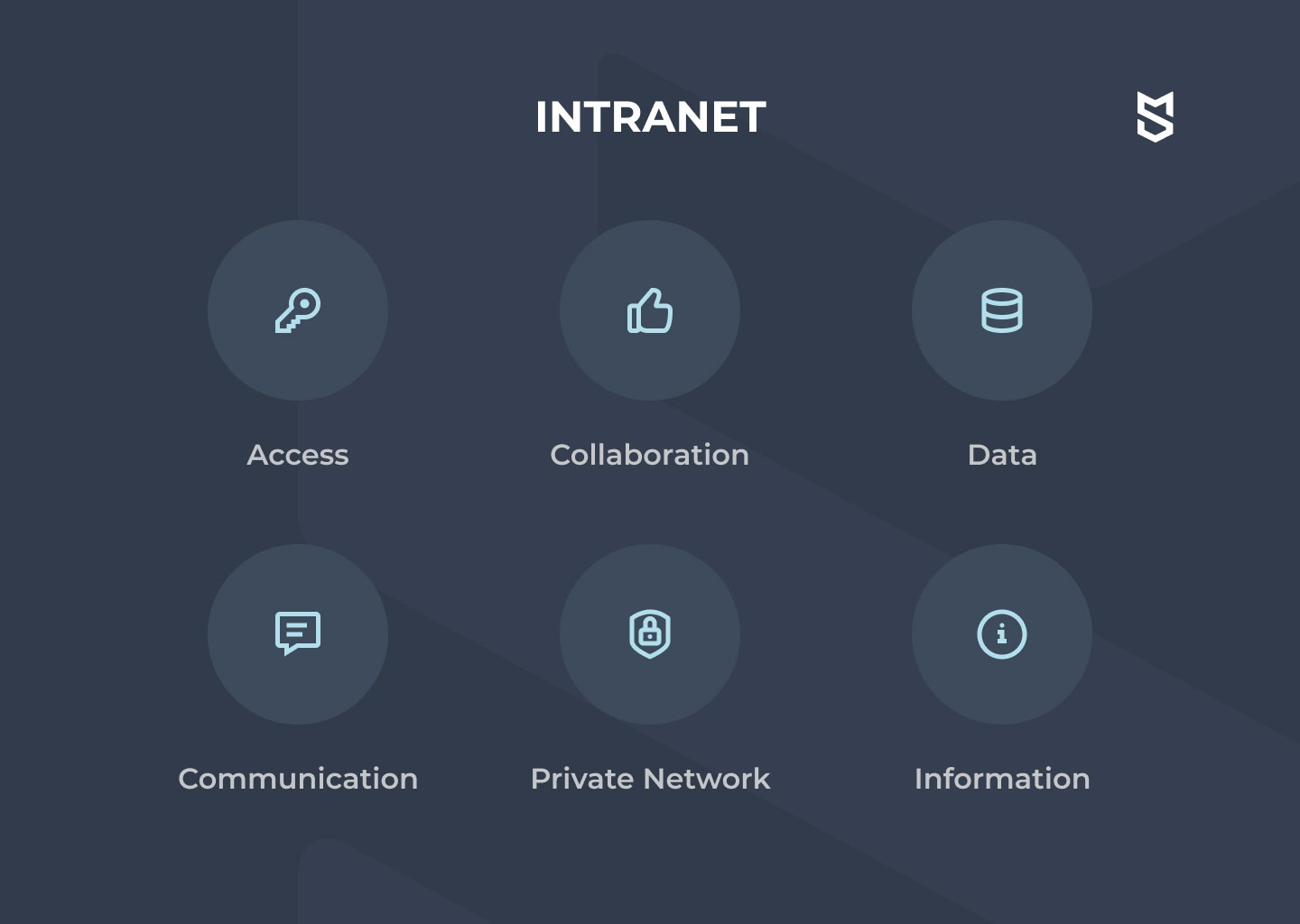
An intranet is one of the oldest corporate communication tools. Basically, it’s a closed network to which only those working for the company have access. As a solution with limited access, an intranet allows for storing and sharing sensitive data and files — something heavily discouraged when it comes to email and messengers.
However, data security is still a concern with intranets, as they may store lots of data that could harm a company if the intranet were hacked into. Additionally, most intranet solutions are not very easy to navigate, and to create a catalog-like system, a specialist might be needed.
2. Digital signage

Digital signage entails screens where office-wide announcements can be displayed for everyone to see. This method of internal communication is useful for urgent announcements in companies where all or the majority of employees work in the office and the office itself is quite large. While you never know when each employee will open a company-wide email, chances are everyone will see an announcement at the same time when it’s displayed on a screen in the middle of the floor.
On the other hand, digital signage is a one-sided communication tool, allowing management to make company-wide announcements. It’s not suited for collaboration or communication between employees and teams. It’s also a strictly in-office tool.
3. Video chat tools
This is another single-purpose type of tool, intended for streaming and/or communicating via video. Besides the obvious use case of video calls, this type of software can be used to stream feeds from conferences, important meetings, and other events. Connected to digital signage tools, video streams can be displayed on screens around the office.
4. Collaboration tools
In this article, we use the term collaboration tools to mean cloud-based software that allows for multiple simultaneous users. Google Docs and Google Sheets come to mind first, but of course, there are more examples. Office 365 allows for collaborative editing, and among UI/UX designers, Figma is gaining popularity at an astonishing speed. With cloud-based software, work can be accessed from anywhere at any time, making it possible to work with remote staff all over the world.
5. Employee social networks

The newest trend in enterprise connectivity solutions is work-centered employee social networks (ESNs). Let’s be real: the majority of people aged 18 to 65+ use social networks in their spare (and sometimes not-so-spare) time. The emergence of ESNs was just a matter of time.
Employee social networks are hubs of employee activity: you can use them for announcements, surveys, collaboration, to recognize prominent employees, etc. Furthermore, these networks can be used for things aside from work — for example, to let employees get to know each other better and express their creativity and to coordinate office affairs that might seem insufficiently important for the intranet or signage tools.
One of the most popular services of this type is Workplace, a Facebook-owned employee social network. Workplace is basically a Facebook for enterprises, and a familiar interface is one of its most winning features. Because it’s one of the most prominent players in the industry, we’ll make Workplace a case study of sorts and the basis for our research on internal communication software development.
How to make internal communication software
First of all, it’s important to decide whether you want to develop an enterprise connectivity platform like Workplace just for your own company or to offer it as a Software as a Service (SaaS) product. It’s important to decide on this before you begin development, since some things won’t be as critical in internal communication software for your own business as they will be in software you’re building to sell. For instance, you don’t need to monetize software made to only be used by your company.
Workplace itself was originally an internal piece of software used by Facebook employees. Only later was it launched for other companies to use. Here’s our take on building an internal communication platform to offer as a service to third parties.
At the business analysis stage of internal communication software development, you and/or your development team should thoroughly research the market situation. Depending on the software development lifecycle model you or your outsourcing company uses, the processes will vary, but research is an integral part of any model.
Research into the market for business communication platforms will help you answer a number of important questions.
-
Are you building a mobile app, web platform, or both? Typically, digital communication platforms for enterprises are made for desktop computers, and more often than not they’re web-based. However, mobile-first employee engagement app development is getting more popular every year. In any case, even a web-based solution must be mobile-friendly these days.
-
What is your niche? Anything can define a niche, from geographical location to a specific scope of features relevant only for a specific type of business.
-
Do you have any competitors in your niche? If you do, analyze how their products operate, what those products’ pros and cons are, and how you can compete.
-
What unique value does your platform offers its users? What does your platform offer that sets it apart from everyone else?
-
What is the user persona for your platform? A user persona is a portrait of your primary target user. If you’re trying to build a communication platform like Workplace, i.e. a platform for companies and not individuals, your user persona will also include a portrait of a business.
-
What will your monetization model be? This is about how you’ll make money off your business communication tool. You should research your competitors’ business models as well as what business model will be met more favorably by your target audience.
-
How are you going to promote your platform? There are a number of ways to advertise a platform, but they’ll differ depending on what you’re building.
More questions will pop up during the idea validation and research stages of business analysis. Many — if not most — development companies today use a Lean Canvas template to outline everything there is to know about a product at the very first stage of development. If you’re interested, check out our article about how to make a business model canvas for a mobile app idea.
Features for an internal communication mobile app or website
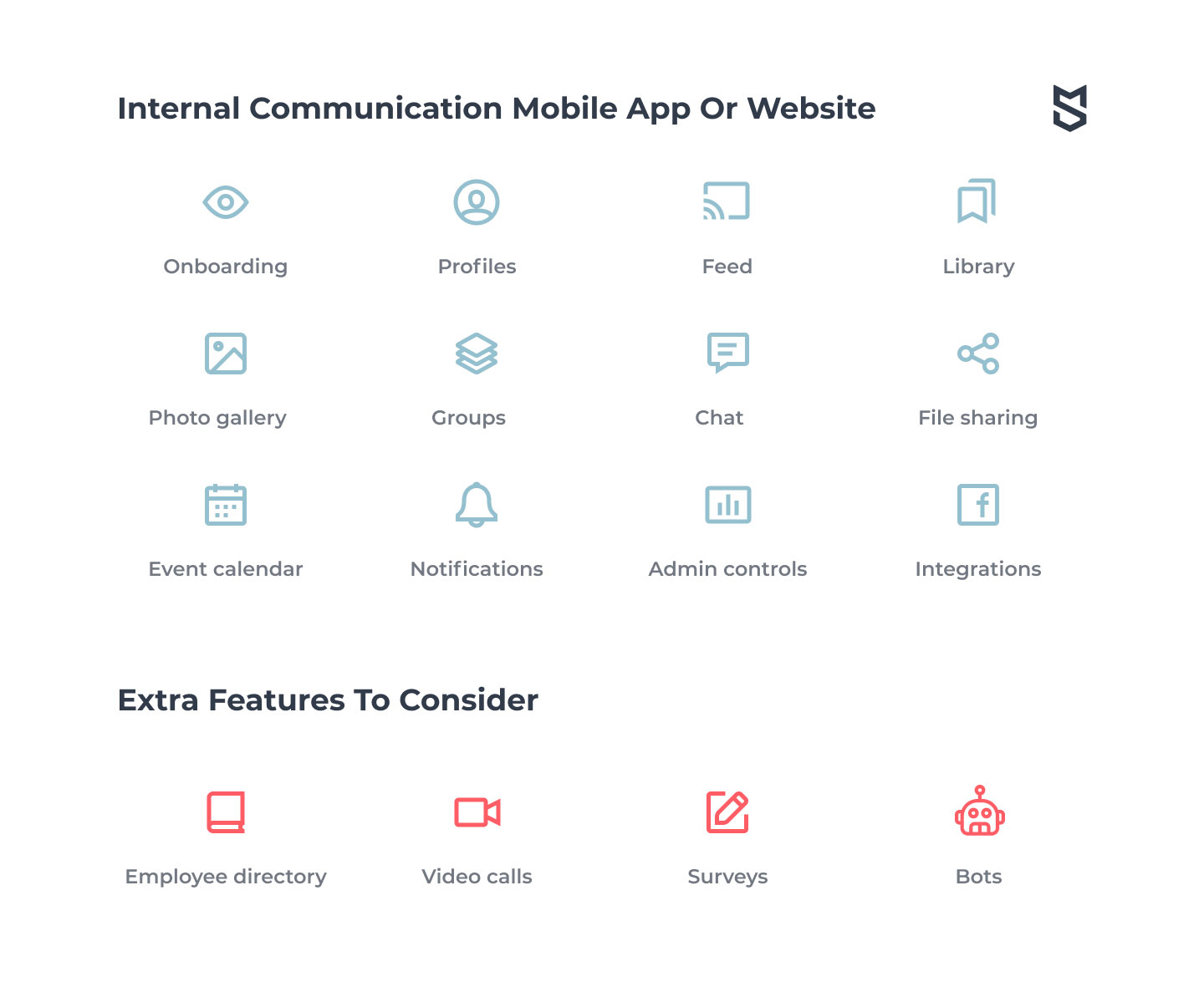
Collaboration and communication platforms like Facebook Workplace are social networks within companies. Whereas Facebook is a global network, Workplace is used by companies locally and combines features of social networks with elements of other types of enterprise connectivity solutions.
Here’s a list of features you may want to include in your employee engagement app.
- Onboarding
When your goal is to make an app like Workplace for internal communication, it’s important to make onboarding as easy to navigate as possible so users don’t spend too much time logging in and searching for everything they need.
At the same time, for a corporate social network, implementing sign-up/log-in via personal accounts of traditional social networks like Facebook and Twitter might be considered a liability. One solution that’s both easy to use and more secure is log-in via corporate email accounts.
- Profiles
The fields you provide in user profiles will depend on the extent to which you want your employees to connect and mingle. The obvious must-have fields in a business communication network are name, position, department, and contact details (phone number, email, Skype, etc.). However, if one goal of your platform is to improve relationships between employees, it might be useful to add non-work info like hobbies.
- Feed

This is where all information will be posted: announcements, current projects, achievements, and updates regarding corporate life. If you’re making a website like Workplace for large corporations, it will be useful to implement some sort of filtering system, like tagging, possibly powered by machine learning. This way, the system can sort posts by relevance for each user based on their department and the posts they react to.
On the other hand, there must be functionality in place to pin corporate-wide announcements so everyone sees them, regardless of filtering.
- Library
Adding some intranet functionality to a corporate social network won’t hurt. A library of corporate documentation will help you store everything in one place. If there are documents intended only for a certain group of employees (like top management), levels of access can be added.
- Photo gallery
This can be either a separate feature or a subcategory within the library. Depending on the scope of activities employees will share within the internal social network, the photo gallery might host official corporate photos from events like conferences as well as photos from after-work get-togethers that employees would like to share with everyone to improve the corporate spirit.
-
Groups

Groups are necessary when you build an internal communication app for corporate clients. Announcements with limited access can be posted so that only group members can see them — for example, department news or updates for employees working on the same project. -
Chat
With communication being the primary goal of a corporate social network, instant messaging functionality is a must. It’s vital to implement direct messaging between users as well as some version of group chats for departments or teams working on the same project or task.
- File sharing
Sharing files is necessary for almost any business communication. Depending on what companies will be using your communication platform, sharing one type of file might be enough. But generally, it’s better to offer support for multiple file types.
- Event calendar
Adding events to a calendar within the internal corporate network instead of (or in addition to) Google Calendar will help your employees organize their work without having to leave the internal network and switch to other services.
- Notifications
Notifications for the desktop version of your employee engagement app or website and push notifications for mobile apps are necessary so employees don’t miss important announcements or messages when the app itself is in the background.
- Admin controls
Company management or a specially assigned person must be able to add and remove employees, change their access levels, and monitor internal communications. An admin usually has access to any and all groups, can edit and pin/unpin announcements, and can manage the workforce activity.
- Integrations
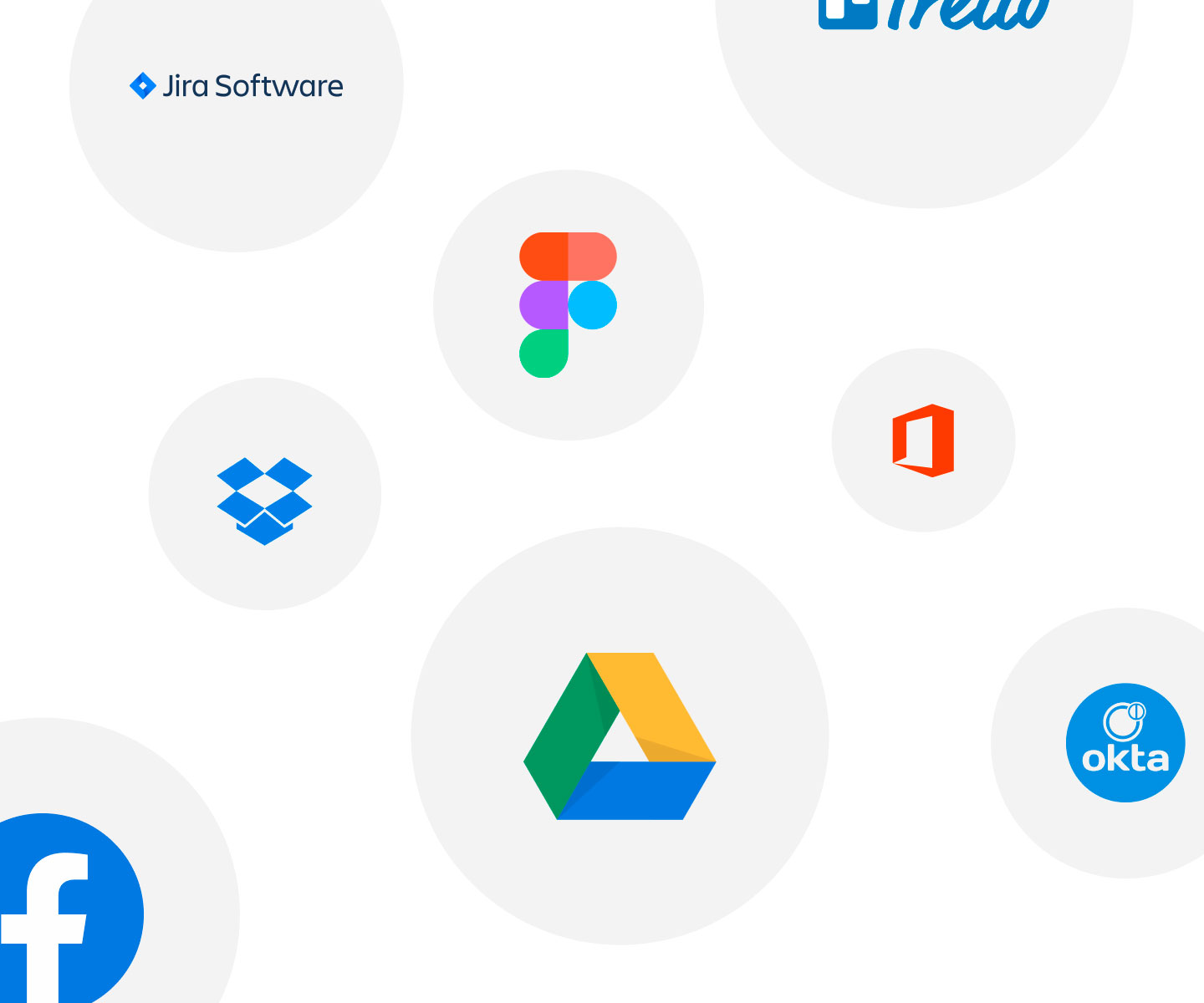
Some functionality can be added to communication applications by integrating third-party apps. For example, instead of creating functionality for collaborative document editing from scratch, existing services can be integrated into the platform. Facebook Workplace integrates with G Suite, Jira, Dropbox, Office 365, and more. You can add relevant services and integrate your customers’ existing internal software.
Extra features to consider:
- Employee directory
This is a handy feature for large companies where finding out who’s who can be a challenge. Having a top-down chart from managers to each department’s junior employees will help users quickly find the person they need to get in touch with.
-
Video calls

If your company or, in the case of a SaaS product, your customers’ businesses work with remote contractors or have employees who travel frequently, internal video call functionality is a must. It will allow you to keep all communication inside the same software and will make it more efficient. It’s always easier to make a call than type a message. -
Surveys
It’s always important to understand the mood in the company, relationships within and between departments, and the level of employee satisfaction. Usually, office managers or other designated employees are tasked with conducting such research using all kinds of survey tools (Google Forms, SurveyMonkey, and others) in addition to talking with each employee individually. Adding a survey feature to your internal network will make it easier to manage these surveys and share their results.
- Bots
Bots can help employees navigate the software and can provide customer support. As with feed filtering, they can be powered by machine learning technology.
What is the cost to make an enterprise connectivity platform?
To calculate (even roughly) the cost of business communication software development, it’s first necessary to understand what specialists you’ll need to hire. For this kind of software — a local social network, essentially — a full team will be needed:
- Project manager (unless you’re prepared to monitor and manage every aspect of development yourself)
- UI/UX designer for web development
- UI/UX designer for mobile apps (one designer can work with both iOS and Android apps)
- Frontend web developer
- iOS developer
- Android developer
- Backend developer
- Quality assurance specialist
As we’ve mentioned, most internal communication apps are built primarily for the web. It’s logical to have a web app in an office where everyone uses a desktop or laptop. However, if your business (or your target audience’s businesses) includes specialists working on the go or in the field, you should create a solution that allows them to actively engage in company life. While this can be achieved by adapting a website for mobile devices, the scope of functionality a regular social network-like communication app offers will probably make a website too cluttered for effective use on mobile devices. In cases like this, a native app is way more convenient for users.
Depending on your target audience, it might be enough to build an app for either iOS or Android instead of both.
As you can see, the cost to make an internal communication platform is hard to estimate. Web-only development of an internal communication app will take about three months and the starting cost might be around $52,000. Mobile development takes longer and, hence, is more costly. Expect to pay at least $61,800 for one mobile app and to wait about five months for it to be completed. Two mobile apps won’t cost you twice as much, though, since you won’t need separate UI/UX designer and quality assurance team for each of them.
Conclusion
Corporate communication evolves constantly in reaction to social changes. Today, building transparent businesses and making your employees engaged in your company’s life — as well as in each others’ lives — is more important than ever. That’s why employee communication app development is becoming more and more popular and communication apps are becoming more and more similar to full-fledged social networks. The possible benefits of these services are very attractive.
At Mind Studios, we offer software development and consulting services. Whether you’re looking for a development company to bring your idea to life or are just trying to find out how to make an internal communication website and how much it will cost, we can help. Drop us a line and we’ll get back to you with more detailed information and a quote.

